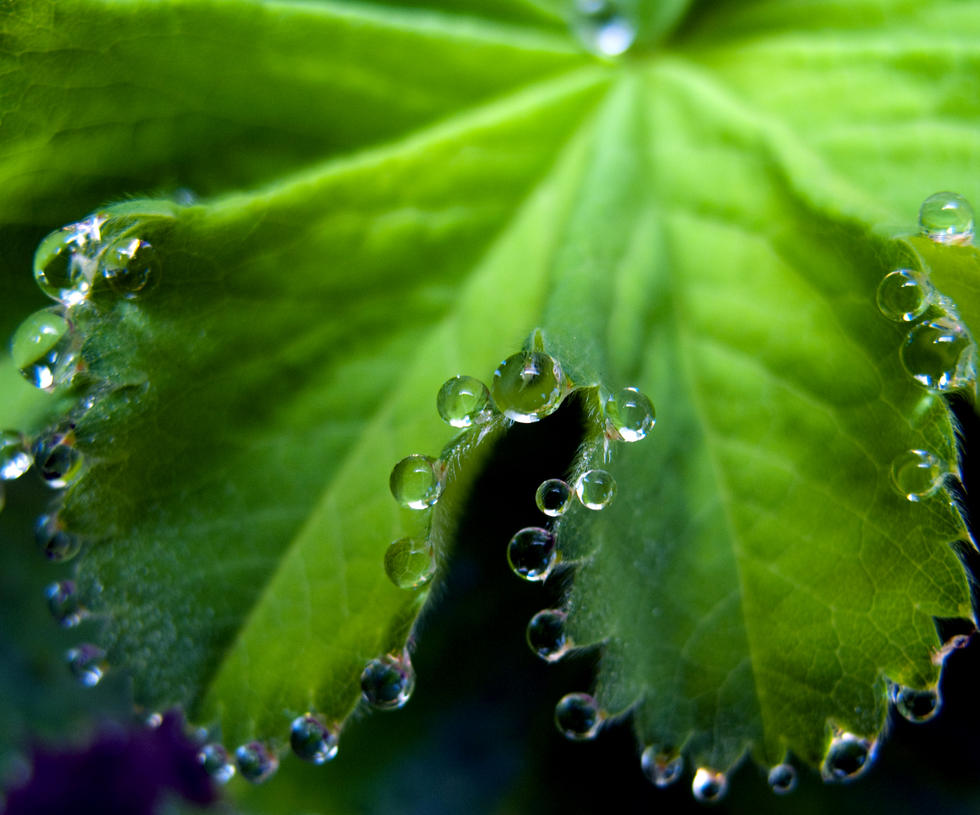Guttation is process in which there is a loss of water in the form of water droplets from the leaves and other parts of uninjured plant. It was first discovered by Bergerstein in 1887. Guttation occurs through special structures called hydathodes.
The big difference between transpiration and guttation is that the evaporated water through transpiration is always pure but in case of guttation the liquid will never be pure water. It contains 0.6-2.5 gm/litre of solutes both organic and inorganic solutes. Normally guttation takes place during night and during morning. Most of the time guttation is mistaken by dew drops but keep in mind that droplets because of guttation is always present on the margins and at the tips of the leaves. Hydathodes are structures made up of loosely arranged colourless parenchymatous cells called epithem. Exudation of water is because of positive pressure in the xylem tissue. Because of this pressure the liquid forced out through hydathodes. Actually during day time because of open stomata excess of water could be evaporated through transpiration. But during night when stomata is closed excess of the water is forced to the outside through guttation. guttation is also shown by plants during high humid climate.

Guttation is not present in all types of plants. Trees because of great height are unable to develop to much pressure in the xylem that it creates forces and push excess of water to the outside through hydathodes. Non-woody plants, grasses, some vascular plants and shrubs less than 3 feet height usually show guttation.
Bleeding:- It is the exudation of liquid or sap from the injured parts of the plant. Bleeding occurs because of root pressure, phloem pressure and xylem pressure.
The big difference between transpiration and guttation is that the evaporated water through transpiration is always pure but in case of guttation the liquid will never be pure water. It contains 0.6-2.5 gm/litre of solutes both organic and inorganic solutes. Normally guttation takes place during night and during morning. Most of the time guttation is mistaken by dew drops but keep in mind that droplets because of guttation is always present on the margins and at the tips of the leaves. Hydathodes are structures made up of loosely arranged colourless parenchymatous cells called epithem. Exudation of water is because of positive pressure in the xylem tissue. Because of this pressure the liquid forced out through hydathodes. Actually during day time because of open stomata excess of water could be evaporated through transpiration. But during night when stomata is closed excess of the water is forced to the outside through guttation. guttation is also shown by plants during high humid climate.

Guttation is not present in all types of plants. Trees because of great height are unable to develop to much pressure in the xylem that it creates forces and push excess of water to the outside through hydathodes. Non-woody plants, grasses, some vascular plants and shrubs less than 3 feet height usually show guttation.
Bleeding:- It is the exudation of liquid or sap from the injured parts of the plant. Bleeding occurs because of root pressure, phloem pressure and xylem pressure.
No comments:
Post a Comment